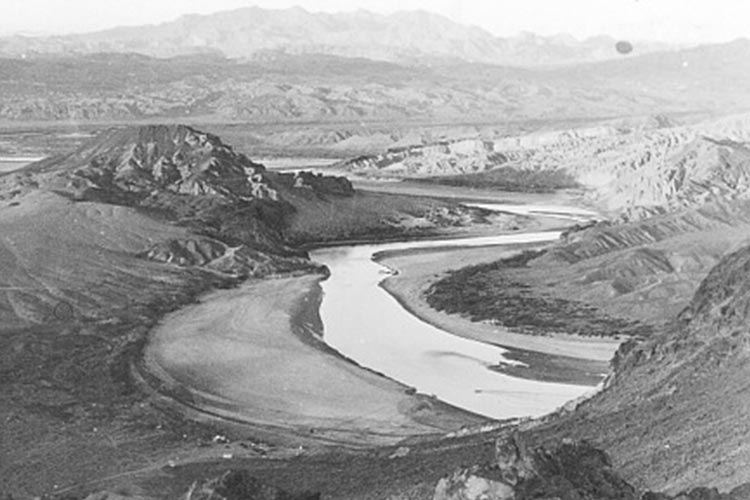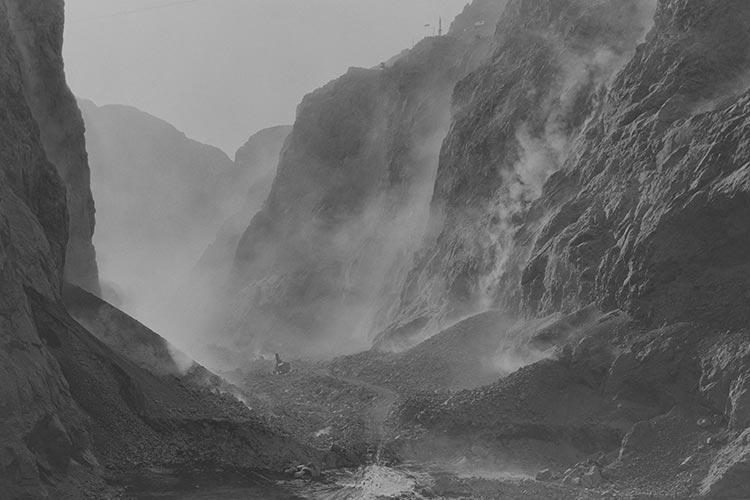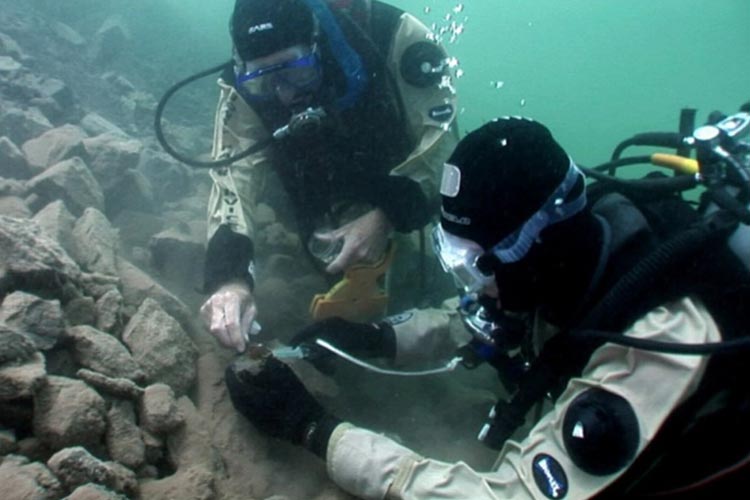
The Colorado River before the Hoover Dam was built. Ecosystems exist as a delicate fabric of interwoven relationships between organisms and the landscape they inhabit. While the natural environment is composed of fragile systems made up of countless parts, both dependent and steadfastly suspicious of one another, it may be surprising to learn that when managed to maintain the greatest extent of natural processes and a diversity of components, ecosystems can prove resilient in the face of new neighbors. Lake Mead was created when the Hoover Dam formed a lake where a great river once flowed. The native fish that once swam1 in the warm silty waters of the Colorado River became the first residents of a clearer, cooler Lake Mead. This new habitat soon became home to fish transported2 from other regions and habitats to provide recreational fishing opportunities. Both the native and the introduced non-native fish had to adapt to their new home; none of the fish species in the lake were in their former ideal conditions. The management trick is to support a variety of habitat conditions within the lake and monitor the fish as they adapt. The fish inhabiting3 the Colorado River prior to the creation of the Hoover Dam, such as the Colorado pikeminnow, razorback sucker, and humpback chub, could have never predicted the changes that were to come in 1935 when their habitat abruptly changed from a seasonally warm, turbid and fast-moving river, into a bounded and cooler lake. These changes presented significant stressors for the Colorado River fish which they would have to get used to in order to survive. 
Explosives stripping canyon walls at Boulder Dam site, 1934. Like the native Colorado River fish, introduced fish that found themselves in Lake Mead had to get used to a new habitat too. The drastic habitat changes that occurred when Lake Mead was formed made nearly all life in the lake native and simultaneously non-native. Management’s task became protecting fragile populations of native fish while fostering an important byproduct of the Dam project: Recreation. Boating and fishing would eventually attract millions of people annually to the new lake, and maintaining a healthy and thriving sport fishery was essential. The good news is, the natural world tends towards resilience and even when faced with extreme stressors life has the ability to adapt, ecosystems can evolve and balance can be achieved. Today, eighty years after the Hoover Dam changed critical river habitat into a lake environment, native and non-native fish continue to make Lake Mead and Lake Mohave their home. They are all interconnected and important components of complex food webs within the lakes. Managers continuously monitor the fish4, water quality, and habitat conditions to understand the population status of the fish. For example, managers annually monitor water quality, look for water contaminants that may harm fish, monitor fish populations and fisherman catch rates, assess plankton and the food web, and work to prevent the arrival of invasive plants and animals that would harm lake ecosystems. Interagency and university research teams collaborate to understand lake ecosystems and conditions. Their information and data help interagency managers develop tools and strategies to have stabilized conditions and balanced systems in the lake. These include enhancing the treatment of urban waters released back to the lake, community actions to reducing the use of contaminants, habitat restoration, and even by adjusting fishing regulations. 
Scientists monitor the invasive quagga mussels that could harm the lake ecosystems. In Lake Mead and Lake Mohave, introduced sport fish species have become important food sources for aquatic birds. While it is easy to recognize the impact that non-native fish have had on native Colorado River fish, managers are seeking to understand and maintain those overall system conditions(such as water quality, system hydrology, and habitat structure) that allow this managed ecosystem to evolve with changing conditions, allowing the resilience of nature to support a complex variety of organisms for us to enjoy. |
Last updated: April 7, 2017
